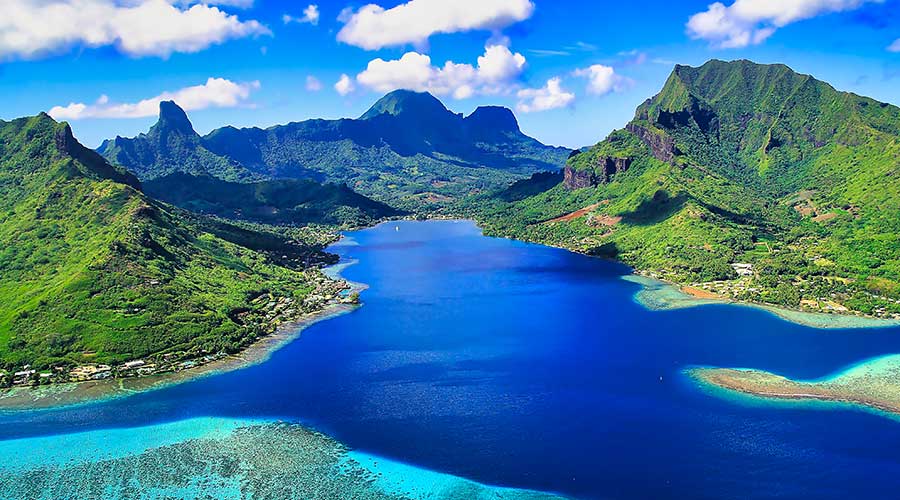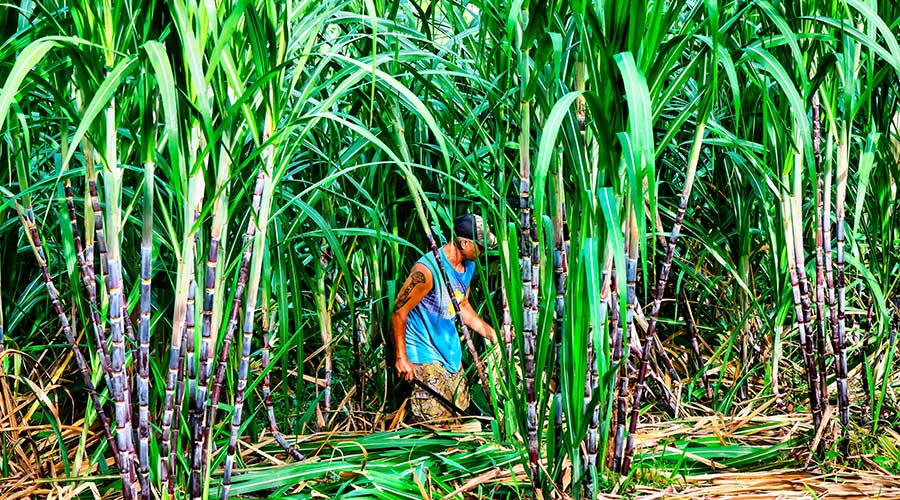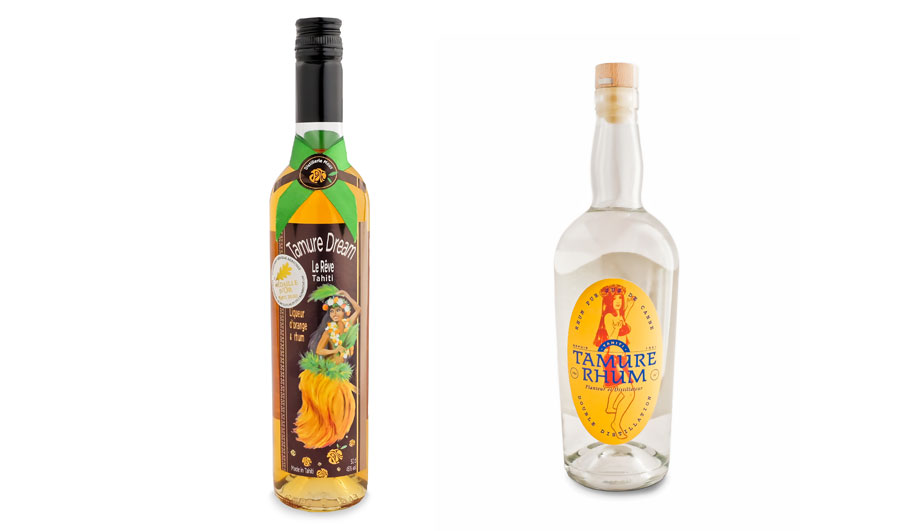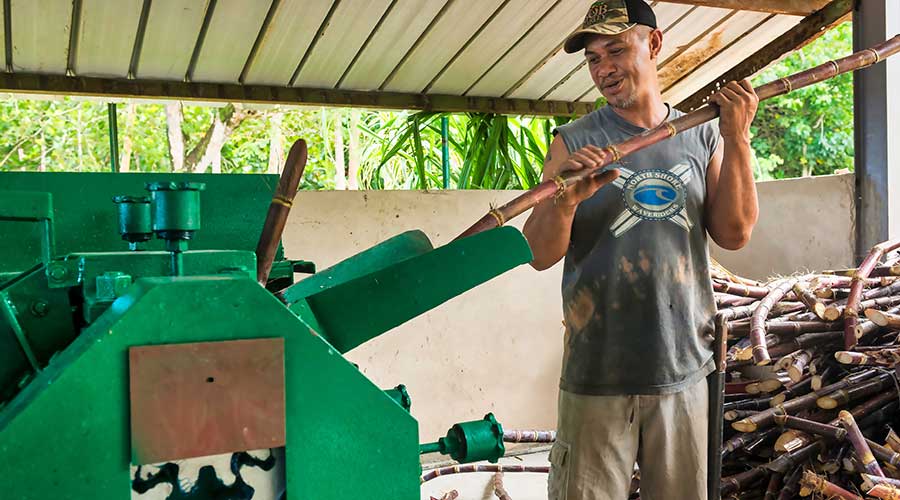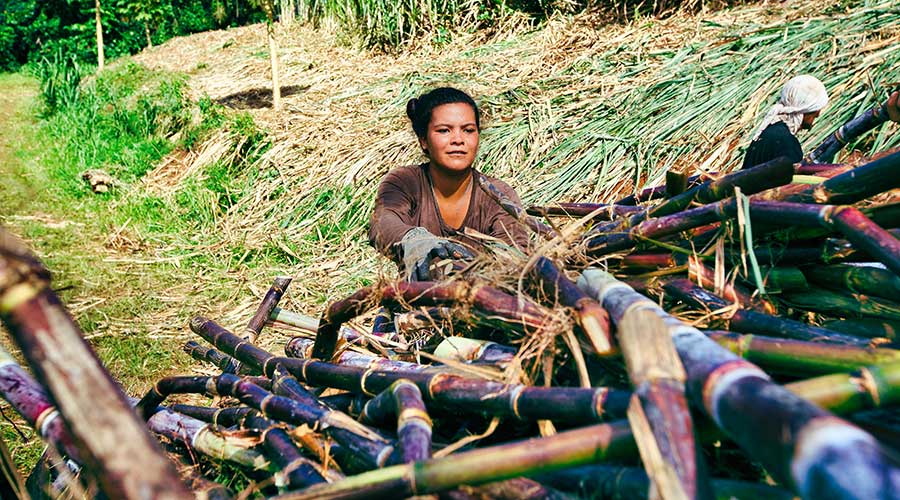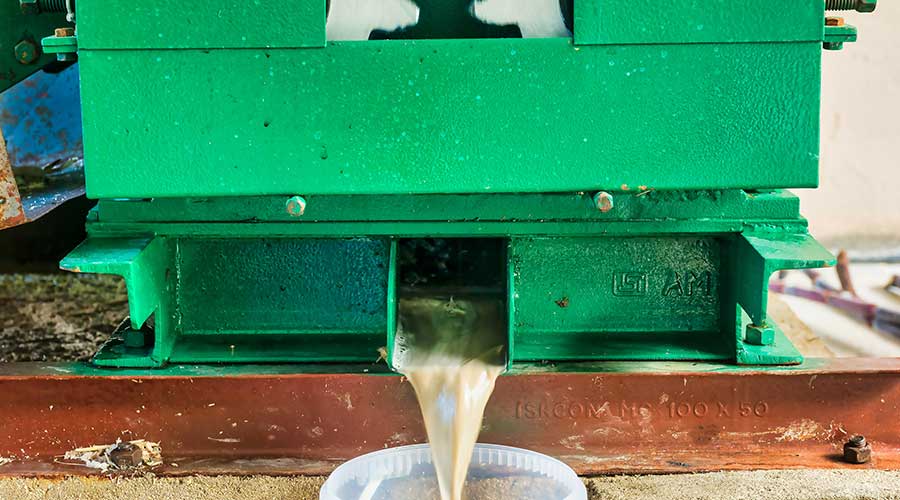While sugar cane has long been cultivated in French Polynesia, it was not until the 19th century that rum (from molasses) was produced. Its native varieties spread throughout the world, even becoming dominant before falling into disuse. For a few years now, and especially since 2015, Polynesian rum has been experiencing a real renaissance via pure cane juice. It conquers the heart of the amateurs and the juries of national and international competitions. So much so that it is now trying to obtain its own geographical indication and to become an ‘agricole rum’.
A radiant sugar cane!
French Polynesia has a massive region of 5 million km2 that is primarily marine. The territory is divided into five archipelagos (the Society archipelago, which includes the Windward and Leeward Islands, the Tuamotu archipelago, the Gambier archipelago, the Australs archipelago, and the Marquesas Islands), and 118 islands, 76 of which are inhabited, with 275,918 people living on them in 2017.
What about the significance of sugar cane in all of this? Although it is unknown when sugar cane was initially farmed in Polynesia, the first inhabitants came in 300 AD, most likely from New Guinea. Sugar cane originated in this region as well, therefore it is possible that they brought it with them.
In any event, it was cultivated before the colonial era, before the English, and then the French, who imposed their dominion via force in the nineteenth century. One of the Polynesian cane varieties, called O’Tahiti, spread via Mauritius, Reunion, Africa, the West Indies, Hawaii, the USA… and even in the Caribbean to become the main sugarcane cultivated in the world from 1820 to 1850.
Before being supplanted by hybrid varieties that are more disease resistant and productive… and falling out of favor even in its homeland, the Polynesian government encouraged sugarcane cultivation in the 1850s, and large plantations were established in Atimaono (Papar commune) and Pra’e in Tahiti or Mo’orea.
Up to seven sugar factories were built, as well as distilleries to produce molasses rum. However, Polynesia would never truly become a sugar land because various sugar crises and rebellions halted its development. The last factory closed in 1900, and professional sugar cane cultivation declined… until David Moux got involved!
The first pure juice rum in Polynesia
The man who first defined himself as a farmer began harvesting sugar cane plants while working as a quantity surveyor for the French military in Polynesia. Sugar cane was indeed present in most of the gardens of the houses he visited. “My father found more than a dozen local varieties that he replanted, and he cultivated the best ones to make cane juice that he sold in the markets,” said David’s son Youk Moux (Tamure distillery).
At the end of the 1980s, David Moux found himself with about four hectares and was struggling to sell his production. The idea then arose to make rum to valorize his surplus of cane juice.
David Moux built a makeshift still but the result was not there. Internet did not exist, so it was difficult to get information. He then decided to train in distillation by taking a first course (he did two in all) at Bielle in Marie-Galante.
On his return, using his and his wife’s wages because no banks would lend him money, he purchased distillation equipment in Brazil, which included a still heated on wood fire with a capacity of 1000 liters. David Moux was finally granted permission to distill in 1992.
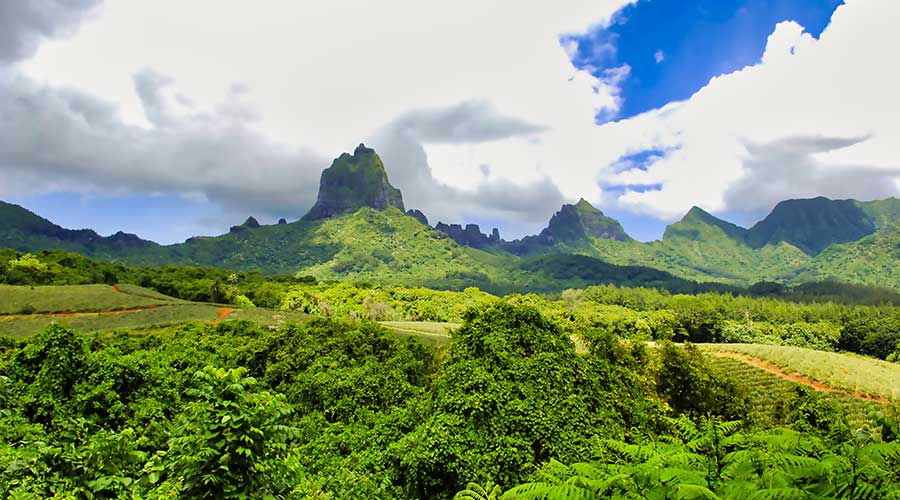
2015, the year of the Polynesian rum
In 2005, Laurent Masseron, who had made a career of distributing wine and rum from the West Indies (J.M), moved to Taha’a where he bought an estate: Pari Pari. “With my wife, we wanted to take a step back and apply the positive things we had seen in wine, such as organic and biodynamic farming, and produce a rum,” says the man who manages the Pari Pari distillery.
The estate began by producing vegetables, coconut and tamanu for their oils. During this time, he looked for the best local varieties to produce rum and set up his distillery. In 2015, he launched his brand: T Rhum. 2015 is definitely a milestone as it is also the year when the first Mana’o brand rum was launched.
In the early 2010s, a group of friends who love West Indian rums decided to try distilling cane juice from local varieties. The result was interesting and they decided to set up a research group to try to find and identify the total number of Polynesian varieties. “We knew that Polynesian cane had potential because it was the origin of agricole rum in the West Indies,” says Olivier Duret, the Mana’o ambassador.
A dozen varieties were found and put into cultivation. They will then be listed in the specifications of the Protected Geographical Indication (GI) of Polynesian rum currently being created. But let’s not get ahead of ourselves.
In 2013, the friends began a program to buy land and plant sugarcane, and as opportunities and hard times presented themselves (it is difficult to find viable land for sugarcane in Polynesia), they expanded to Tahiti, Tahaa, and even the atoll of Rangiroa, where Dominique Auroy’s winery is already located.
In 2015, the first rums became available on the local market. Lastly, it was also the year of birth of the Manutea brand. Behind these rums made from pure Polynesian cane juice is the Brasserie de Tahiti, a powerful group on the Polynesian scale (one of the ten largest employers) that was already producing fruit juices (Rotui), beer (the unavoidable Hinano), but also fruit brandies and even rum arrangé (from molasses rum).
First success and growth crisis
Polynesian cane juice sold well. However, they were also exported, particularly to France, where exotic discoveries were in high demand.
Polynesian rums are even beginning to win silver or gold medals at major wine and spirits competitions, such as the Salon de l’Agriculture’s Concours Général Agricole.
Sugar cane now covers about 50 hectares spread across several islands. On Tahiti, Taha’a, and Rangiroa, four distilleries produce rum from pure sugarcane juice: Tamure, Mana’o, Manutea, and Pari Pari.
If the goals are ambitious (300 hectares in 10 years and 1000 in 20 years! ), there will be many roadblocks on the way to the development of Polynesian rum. Then there’s the issue of distance.
Polynesia is remote and must rely on imports for almost everything. Agricultural land is scarce or controlled by the government and the Directorate of Agriculture, or DAG, as well as its state lands.
The workforce is small, and the work in the fields, which is physically demanding, does not always entice people. In short, we have some of the same issues as in the West Indies or Reunion Island, but they are more severe.
Regardless, the forefathers of Polynesian pure cane juice rum are fighting tooth and nail and proposing solutions. One of them would be the recognition of a Polynesian GI rum and, as a result, the mention of agricultural rum for export in France and the European Union.
Towards a Polynesian agricultural rum protected by a GI
“It would make perfect sense for us to be able to use the term ‘rhum agricole’ (agricultural rum), because we do produce agricole rum, which is also French,” explains Olivier Duret. In terms of the GI, it would allow us to protect the uniqueness of our rums as well as their quality.
Because the specifications presented to the INAO are extremely stringent and clearly aim to develop very high-quality rums that are costly to produce. Judge for yourself: only a dozen varieties of sugar cane are permitted, all of which are indigenous to the region. “There are seven noble varieties, three modern varieties, and one wild variety with little or no juice,” Etienne Houot explains (Manutea).
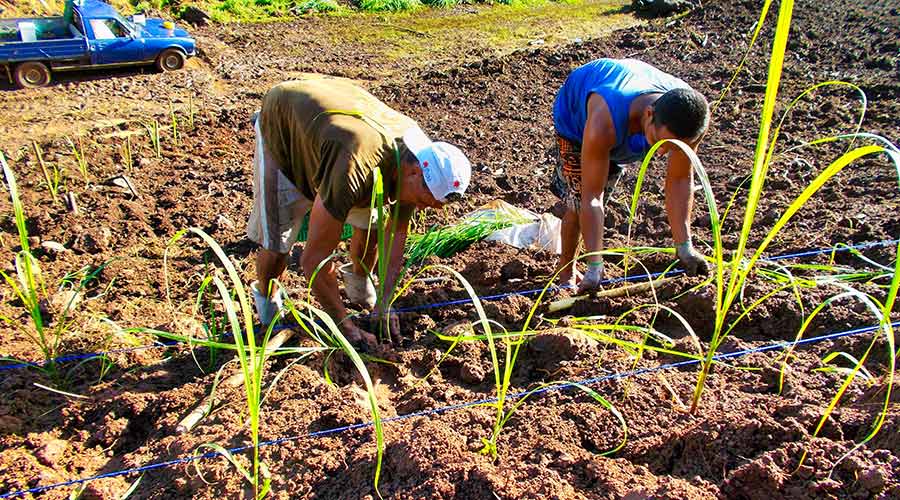
However, because they are highly aromatic, they are also not very productive. The press must be completed in a single pass, without the addition of water! The text makes no restrictions on yeasts, stills, or columns, and the rum must be at least 90% ABV. (like any traditional rum under GI, including agricultural ones, ed. note).
The minimum brewing time is three months after distillation, and no additives, including sugar or caramel for coloring are permitted. Except for bottling, which can be done elsewhere, all stages of the process must be completed in Polynesia (for economic and ecological reasons).
This rum, on the other hand, must be reduced in Polynesia with Polynesian water. “We opened this door because the INAO advised us not to be too protectionist and not to do everything on the spot because Europe, which must ultimately validate our request, would not like it,” Etienne Houot explains. In short, everything is being done to ensure the future of the artisanal approach to Polynesian rum.
Let’s talk about the future of Polynesian rum with Marotea Vitrac, Director of Mana’o and President of the Syndicat de Défense de l’Indication Géographique du Rhum Agricole de Polynésie Française. Because, even if the request for GI and recognition of the mentioned “agricole” rum is proceeding smoothly, there are still steps to be taken.

